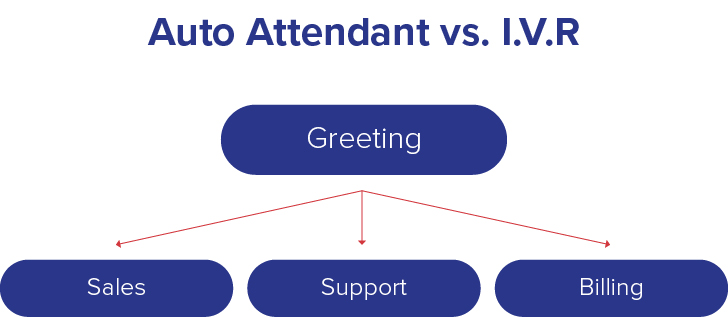IVR’s…love them or hate them, they are an almost ubiquitous part of the contact centre industry and have been around for a very long time. In fact, according to Wikipedia, the first commercial IVR system was built to perform order entry and inventory control back in 1973, although the technology was certainly in its infancy, and considered expensive and difficult to implement.
Since then, the technology has come a long way, and is now pretty much considered a standard part of any contact centre that has any scale to it. The technology has also grown and changed to use Standards based programming like Voice XML, and more recently the acceptance of speech recognition via Siri and Amazon Alexa, Google etc has meant that more and more systems provide for input to be gathered via speech recognition rather than DTMF (Dual Tone Multiple-Frequency, also called Touch Tone).
There is a common misconception that IVR’s are the same as ‘automated attendant’s’. While they might these days be built using the same technology, an IVR is an application that provides information, or is used to perform transactions, whereas an automated attendant is simply built to route calls to a specific area. So, while an IVR may have an automated attendant as a front-end application, it provides much more benefit than a call steering application. For example, an automated attendant would play a message like ‘welcome to ABC company, please press 1 for sales, or 2 for customer service’. An IVR however would be set up to play a similar message, but perhaps with an additional option ‘or press 3 for self-service’. Choosing this option would allow the system to begin a dialogue that collects information from callers, such as customer number and password, and then allows suitable transactions to take place. Examples of this are in a banking environment where the IVR is used to retrieve an account balance, transfer funds, or pay a bill etc.
“While they might these days be built using the same technology, an IVR is an application that provides information, or is used to perform transactions, whereas an automated attendant is simply built to route calls to a specific area.”
The Benefit of using an IVR
The benefit of an IVR over an automated attendant is that the IVR enables simple tasks, that would normally be performed by an agent, to be automated. As a result, the agent has more time to work on more complex tasks. An IVR can be used to run many hundreds of instances of the same application, therefore allowing large amounts of callers to be serviced automatically, at the same time, 24 hours a day, 7 days a week. Because they enable many more calls to be serviced quickly and at significantly less cost, you can see why contact centre managers love them.
The Introduction of CTI
When IVR’s first became commercialised, if a customer failed to complete their transaction in the IVR, and the IVR allowed the customer to be transferred to an agent (not always possible within the application, and a common complaint about IVR’s), then the customer had to begin their query again from scratch, identifying themselves again and requesting whatever it was they were wanting to do in the IVR. As a result, Computer Telephony Integration (CTI) was introduced in the early 1980’s by ROLM Corporation, a US PABX vendor. CTI allowed information gathered by an IVR application, or an agent, to be transferred to the agent’s computer, along with the telephone call so that the agent’s computer could do something with that information. This is generally known as a ‘screen pop’ and allows the call to be completed much more quickly and with a better level of satisfaction for the caller as they do not have to provide the same information multiple times. The CTI information also allowed for more intelligent routing decisions to be made.
The other cool thing about this type of technology is that it is very similar to “chat bots” and other newer automation technologies. They can all use the same basic logic structure, providing similar functionality, and using the same integration points to access information using a different input / output mechanism – IVRs using speech and voice processing whereas a chat bot uses text.
“CTI allowed information gathered by an IVR application, or an agent, to be transferred to the agent’s computer, along with the telephone call so that the agent’s computer could do something with that information. This is generally known as a ‘screen pop’ and allows the call to be completed much more quickly and with a better level of satisfaction for the caller as they do not have to provide the same information multiple times.”
Considerations for use
With all this technology comes the hard part of deciding what to do with it. I come from the school of thought that says, “just because you can do something, doesn’t mean you should”. So, the first part is to decide what you want to achieve. For example, is it to reduce agent head count and cost? If so, automate every possible use case that you can. If, however it is to provide a better customer experience, then you should probably start by understanding what your customers want from an automated system. If the goal is somewhere between these two extremes, then you should be looking to automate as much as possible, while still making the experience for the customer as painless and simple as possible. To maximise take up rates on the IVR, ideally offer the customer something they can’t get any other way, such as 24 x 7 service; a shorter waiting time for an agent if they have tried and failed the self-service, or something else that is of value to your customers.
“To maximise take up rates on the IVR, ideally offer the customer something they can’t get any other way, such as 24 x 7 service; a shorter waiting time for an agent if they have tried and failed the self-service, or something else that is of value to your customers.”
What are the day-to-day benefits of an IVR?
So, what is in it for contact centre agents and management? To put it simply, agents get the opportunity to spend more time doing more exciting work and less time doing the more mundane tasks. Given the cost of labour, management gets to increase throughput without increasing costs to the same extent. This level of engagement will create happier, more motivated agents, who will in turn, be better suited to serving customers. This motivation, unsurprisingly, will contribute to a more efficient contact centre and increase customer satisfaction.
If you would like us to review your IVR configuration or know more about our IVR solutions contact us today.


